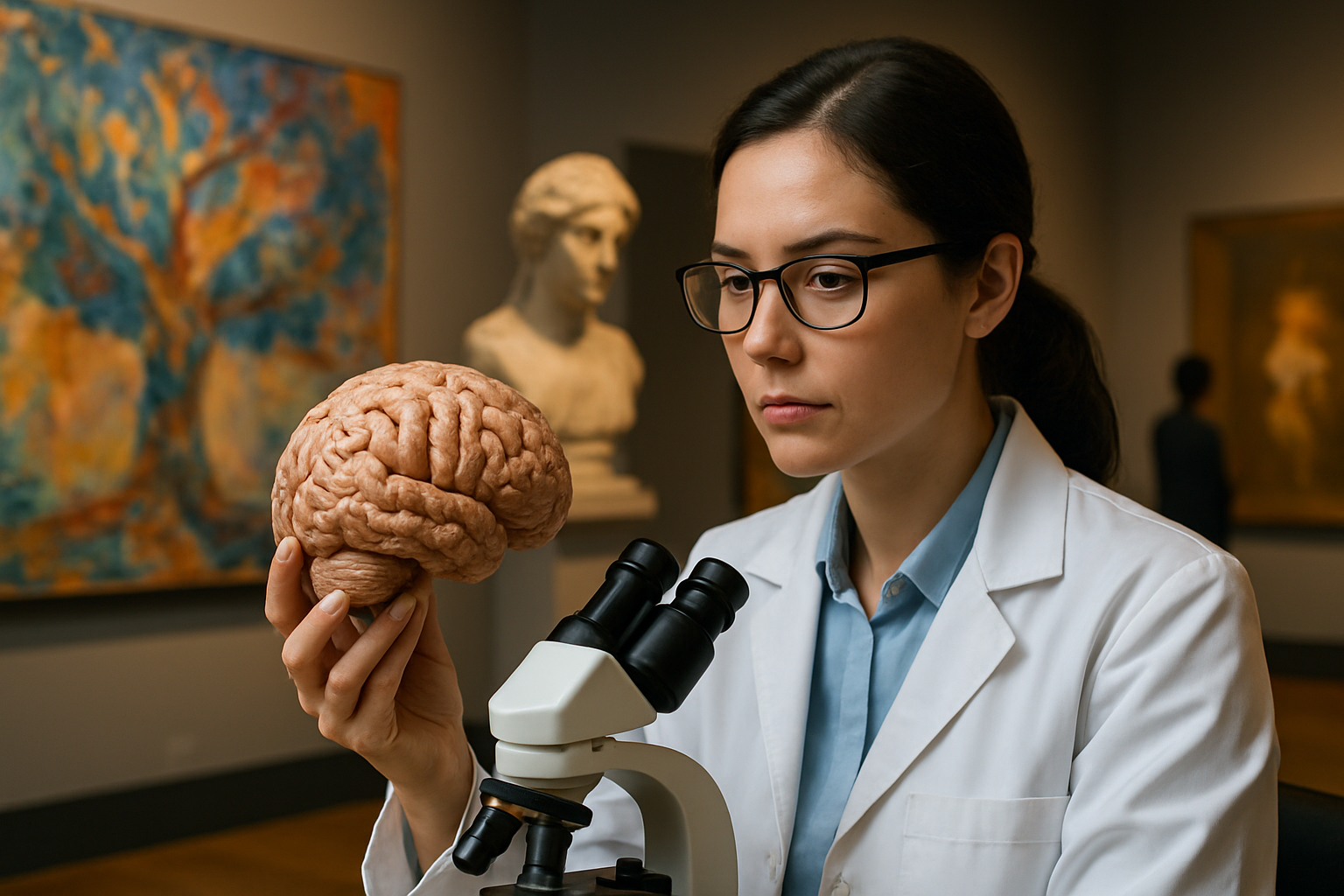Neuroaesthetics: The Science of Beauty in the Brain
The intersection of neuroscience and art appreciation unveils a fascinating realm of human perception. Neuroaesthetics, an emerging field bridging cognitive science and artistic experience, explores how our brains process and respond to beauty. This cutting-edge discipline offers profound insights into the nature of creativity, aesthetic preferences, and the universal human drive to create and appreciate art. Read below to delve into the captivating world of neuroaesthetics and its implications for our understanding of culture, cognition, and human expression.

The field has grown rapidly in recent years, with advancements in neuroimaging technologies allowing researchers to observe brain activity in real-time as individuals engage with art. These studies have revealed that aesthetic experiences activate multiple brain regions, including those associated with reward, emotion, memory, and decision-making. This complex interplay of neural networks suggests that our appreciation of beauty is far more than a simple sensory response – it is a rich, multifaceted cognitive process that engages the whole brain.
The Neural Foundations of Aesthetic Experience
At the heart of neuroaesthetics is the quest to understand what happens in the brain when we encounter something we find beautiful or moving. Research has identified several key neural mechanisms that contribute to aesthetic experiences. The reward centers of the brain, including the ventral striatum and orbitofrontal cortex, play a crucial role in the pleasure we derive from art. These regions release dopamine, a neurotransmitter associated with pleasure and motivation, when we view artworks we find appealing.
Additionally, the default mode network – a set of brain regions active during introspection and mind-wandering – becomes engaged during aesthetic experiences. This suggests that art appreciation involves not just sensory processing, but also self-reflection and meaning-making. The involvement of memory systems in aesthetic experiences explains why personal associations and cultural context can profoundly influence our responses to art.
Universal Principles of Beauty
One of the most intriguing aspects of neuroaesthetics is the search for universal principles of beauty that transcend cultural boundaries. Researchers have identified several features that tend to elicit positive aesthetic responses across diverse populations. These include symmetry, balance, contrast, and the golden ratio – a mathematical proportion found in nature and frequently used in art and architecture.
The principle of peak shift, proposed by Ramachandran and Hirstein, suggests that exaggerated forms of familiar objects or features can trigger stronger aesthetic responses. This might explain the appeal of caricatures or stylized art forms. Another universal principle is the preference for curved contours over sharp angles, which may have evolutionary roots in our tendency to avoid potentially dangerous objects with sharp edges.
Cultural Influences on Aesthetic Perception
While neuroaesthetics has uncovered some universal aspects of beauty perception, it also highlights the significant role of cultural and individual differences in shaping aesthetic experiences. Our brains are highly plastic, constantly adapting to our environments and experiences. As a result, our aesthetic preferences are heavily influenced by our cultural background, personal history, and exposure to different art forms.
Neuroimaging studies have shown that experts in a particular art form, such as musicians or art historians, show different patterns of brain activation when engaging with their area of expertise compared to novices. This suggests that training and experience can fundamentally alter the way our brains process aesthetic stimuli. Cultural differences in aesthetic preferences have also been observed, with some studies finding variations in color preferences and compositional preferences across different societies.
Implications for Creativity and Artistic Practice
The insights gained from neuroaesthetics have profound implications for our understanding of creativity and artistic practice. By illuminating the neural mechanisms underlying aesthetic experiences, this field offers new perspectives on why certain artistic techniques are effective and how artists might optimize their work to engage viewers more deeply.
Some artists have begun to incorporate neuroscientific findings into their practice, creating works that deliberately target specific neural responses. For example, kinetic sculptures that exploit the brain’s motion processing systems, or installations that play with perceptual illusions to create novel aesthetic experiences. This intersection of art and neuroscience opens up exciting possibilities for new forms of creative expression and audience engagement.
The Future of Neuroaesthetics
As neuroaesthetics continues to evolve, it promises to shed light on some of the most fundamental questions about human nature and culture. Future research in this field may help us better understand the therapeutic potential of art, the role of aesthetics in well-being, and the neural basis of creativity itself. Advances in neuroimaging technologies and artificial intelligence are likely to provide even more sophisticated tools for studying the brain’s response to art and beauty.
The implications of neuroaesthetics extend far beyond the realms of art and science. By deepening our understanding of how humans perceive and create beauty, this field has the potential to influence diverse areas such as education, urban planning, product design, and mental health treatment. As we continue to unravel the neural mysteries of aesthetic experience, we may gain new insights into what it means to be human and how we can cultivate more beauty and meaning in our lives.





